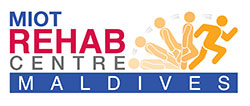Facilities
Tilt Table
To help stabilise their blood pressure and facilitate weight bearing, for patients confined to bed.
- Early Mobility Therapy – tilting and standing
- For patients who have been bedridden or paralyzed
- Reduces the complications caused due to immobility
- Trains in lying, sitting, tilting and standing positions
- Improves trunk stability and Lower limbs strengthening

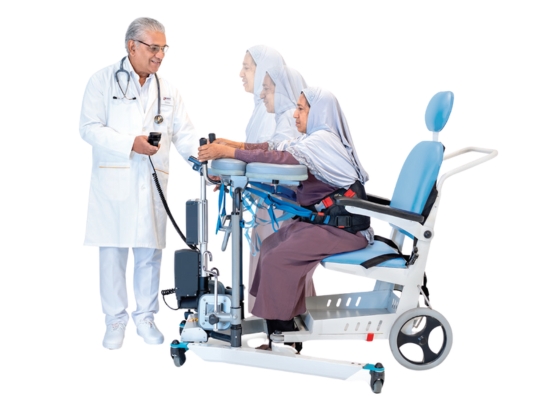
Robot-assisted Gait Trainer
Enhances mobility, strength, and trunk control for those struggling with walking.
- To improve mobility, endurance, motor recovery, and functional walking
- Aids in balance training and fall prevention
- Increasing muscle strength and co-ordination
- Weight shifting between lower limbs
Multi-Gym in Rehabilitation
- Strengthens upper and lower limbs
- Utilises resistance-based exercises
- Enhances mobility and balance
- Promotes overall functional independence
- Conducted under expert supervision
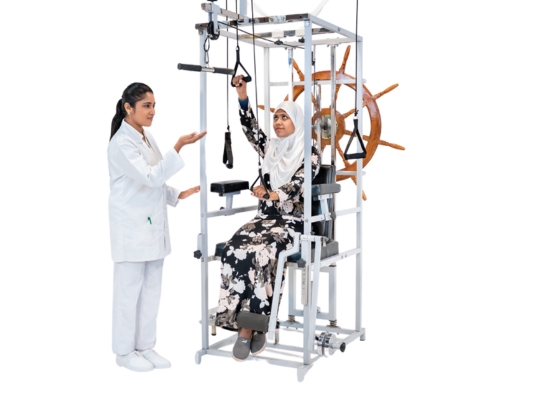
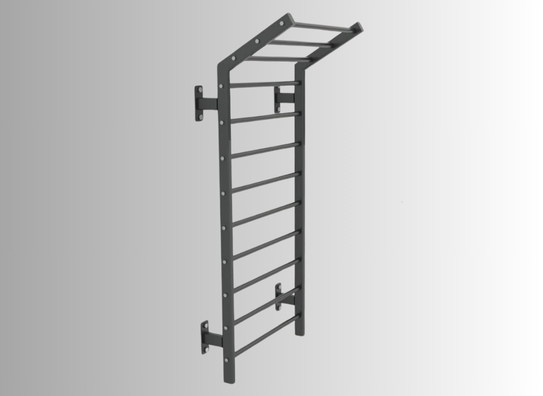
Stroll Bar
- Assists with transitioning from sitting to standing
- Improves balance and coordination
- Enhances lower limb strength
- Supports functional mobility training
- Ideal for patients regaining independence in movement
Leg & Upper Body Exerciser
- Engages both upper and lower limbs simultaneously
- Can be used while seated, ensuring comfort and safety
- Enhances cardiopulmonary endurance and function
- Promotes circulation and overall stamina
- Ideal for patients with limited mobility or during early rehabilitation
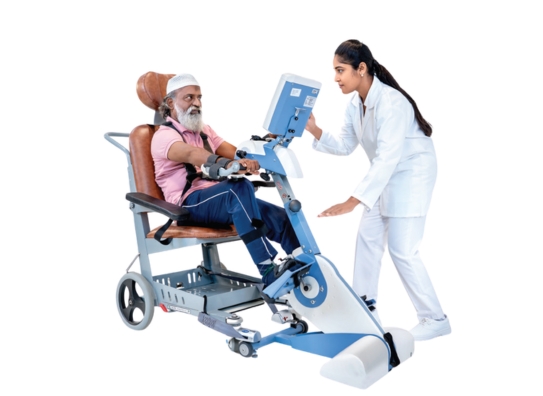
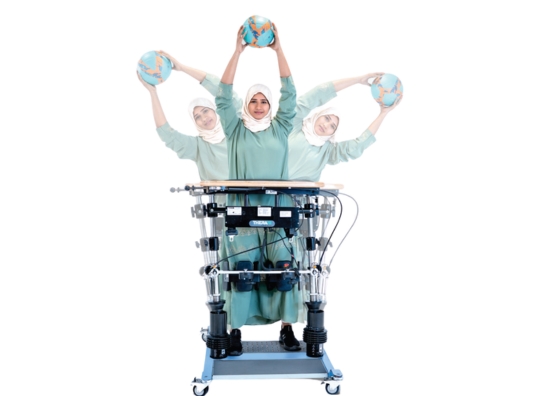
Standing Trainer
- Supports patients who are unable to stand for extended periods
- Improves both static and dynamic standing balance
- Builds lower limb strength and postural control
- Aids in weight-bearing training and endurance
- Promotes safe progression towards independent standing and mobility
Virtual Reality (VR)
- Uses interactive games to engage patients in therapy
- Enhances attention, memory, and executive function
- Provides a stimulating and motivating environment for rehabilitation
- Supports cognitive and motor skill development
- Customisable activities to suit individual patient needs
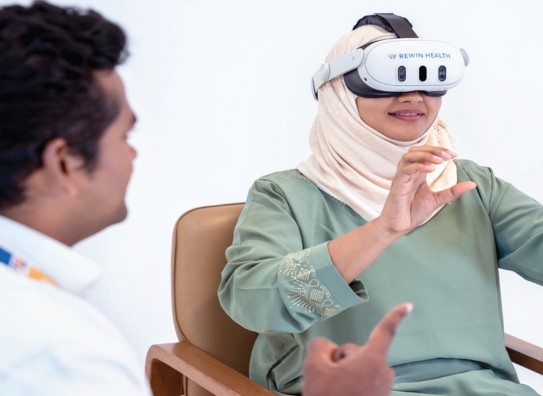
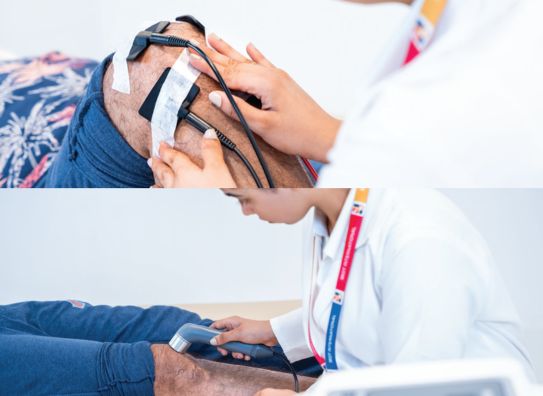
Electrotherapy (Ultrasound & Interferential Therapy)
- Alleviates pain and muscle spasms
- Reduces inflammation, stiffness, and oedema
- Enhances tissue healing and circulation
- Supports relaxation and functional recovery
- Commonly used in musculoskeletal and post-surgical rehabilitation
Parallel Bars
- Assists with gait training and balance exercises
- Enables practice of activities of daily living (ADLs)
- Improves weight-bearing capacity and coordination
- Builds confidence in walking and standing
- Reduces the risk of falls during rehabilitation
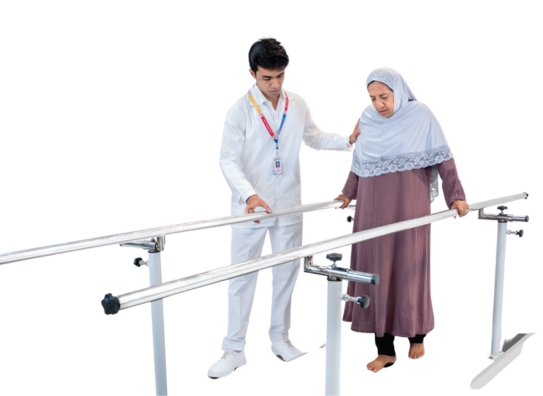
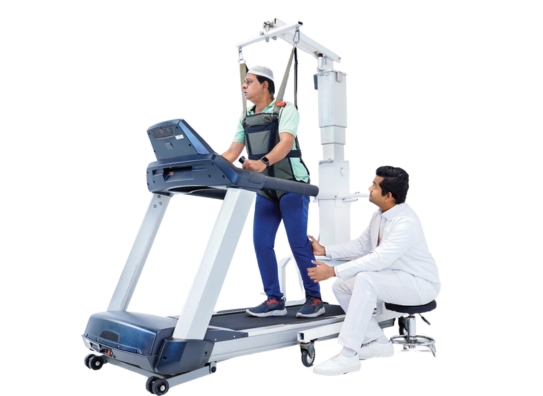
Treadmill with i-GAIT
- Facilitates walking recovery in patients with spinal cord injuries
- Aids in overcoming muscle tightness and gait irregularities
- Supports repetitive and controlled walking movements
- Enhances lower limb coordination and strength
- Provides real-time feedback for improved rehabilitation outcomes
Nerve Conduction Study (NCS)
- Non-invasive diagnostic procedure
- Measures the speed and strength of electrical signals in nerves
- Evaluates the health and function of peripheral nerves
- Helps diagnose conditions like neuropathies, nerve injuries, and muscle disorders
- Assists in planning targeted rehabilitation and treatment strategies
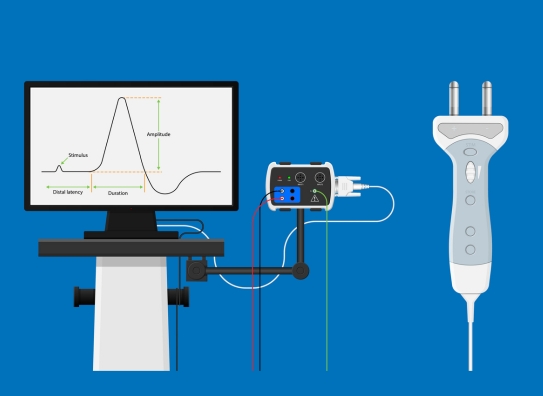
If a patient requires emergency assistance during their rehabilitation, they can receive immediate care in the resuscitation room. A patient facing cognitive challenges such as poor attention, concentration, memory impairment, restlessness, or insomnia due to brain injury will require psychotherapy. The MIOT Rehab Centre, Maldives, features accessible restrooms equipped with grab bars and a wheelchair-friendly elevator, enhancing patient convenience.
